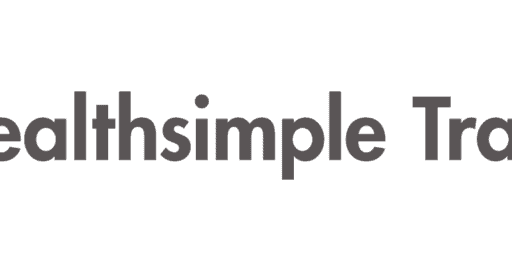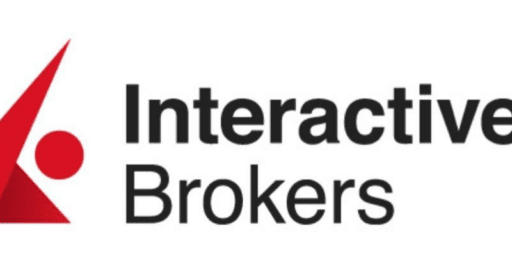Smith Manoeuvre Portfolio – December 2011
For those of you just joining us, below is my portfolio that is leveraged with money borrowed from my home equity line of credit (HELOC). As the money borrowed is used to invest, the interest charged is tax deductible. I write an update every so often to show new positions added along with any market gains/losses. For more details on the strategy and procedure, check out my modified smith manoeuvre strategy and my comparison of online stock brokers.
It’s been half a year since the last update (June 2011) with quite a bit of activity in the leveraged portfolio for a change. We have added to a couple of our existing positions, added several new positions, and despite the market downturn, I’m happy to report that several of our picks have increased their dividend in the second half of 2011.
With the volatility and aggressive sell off of some strong dividend paying companies, I added to a couple of my existing holdings, namely, Royal Bank (RY) and Ensign Energy Services(ESI). New additions to the portfolio include: Pason Systems (PSI), Corus Entertainment (CJR.B), Thompson Reuters (TRI), Brookfield Properties (BPO), Canadian Pacific Railway (CP), Canadian Oil Sands (COS), and Leons Furniture (LNF).
Quite a number of companies stepped up to the plate and rewarded shareholders for investing in their companies with a dividend increase. From my portfolio, they include: CIBC (CM), Scotia Bank (BNS), Toronto Dominion Bank (TD), Fortis Properties (FTS), AGF Management (AGF), Enbridge (ENB), Canadian Utilities (CU), Pason Systems (PSI), Ensign Energy Services (ESI), Corus Entertainment (CJR), and Canadian Oil Sands (COS).
My dividend watch list remains similar where I am looking to increase my position in BMO, TD, ENB, FCR and possibly add new positions in Canadian National Railway (CNR) and Bell Aliant (BA) when their valuations become attractive.
The Smith Manoeuvre Portfolio as of Dec 27, 2011:
| Stock | Symbol | Shares | Avg Buy Price | Total | Div/Share | Yield |
| Royal Bank | RY.T | 100 | $48.39 | $4,838.99 | $2.16 | 4.46% |
| CIBC | CM.T | 45 | $67.14 | $3,021.25 | $3.60 | 5.18% |
| Power Financial | PWF.T | 105 | $35.14 | $3,689.65 | $1.40 | 3.98% |
| Scotia Bank | BNS.T | 105 | $41.91 | $4,400.52 | $2.08 | 4.96% |
| Manulife Financial | MFC.T | 125 | $33.12 | $4,139.48 | $0.52 | 1.57% |
| Fortis Properties | FTS.T | 150 | $25.63 | $3,843.98 | $1.20 | 4.53% |
| TransCanada Corp | TRP.T | 100 | $33.50 | $3,349.74 | $1.68 | 4.52% |
| AGF Management Limited | AGF.B.T | 50 | $22.71 | $1,135.49 | $1.08 | 4.40% |
| Bank of Montreal | BMO.T | 25 | $44.17 | $1,104.24 | $2.80 | 6.34% |
| Husky Energy | HSE.T | 135 | $32.53 | $4,391.27 | $1.20 | 3.69% |
| TD Bank | TD.T | 50 | $48.24 | $2,412.23 | $2.72 | 5.47% |
| Enbridge | ENB.T | 80 | $18.43 | $1,494.39 | $1.13 | 5.32% |
| TransAlta | TA.T | 50 | $21.47 | $1073.49 | $1.16 | 5.40% |
| First Capital Realty | FCR.T | 160 | $9.72 | $1,574.99 | $0.80 | 8.23% |
| Canadian Utilities | CU.T | 50 | $36.40 | $1,819.99 | $1.61 | 4.29% |
| Ensign Energy Services | ESI.T | 200 | $14.98 | $2,995.98 | $0.42 | 2.80% |
| Mullen Group | MTL.T | 100 | $14.54 | $1,453.98 | $1.00 | 6.88% |
| Rogers Communications | RCI.B.T | 100 | $34.39 | $3,439.48 | $1.42 | 4.13% |
| George Westin Ltd | WN.T | 50 | $68.64 | $3,441.99 | $1.44 | 2.09% |
| Pason Systems | PSI.T | 100 | $14.14 | $1,423.99 | $0.40 | 2.81% |
| Corus Entertainment | CJR.B.T | 100 | $19.87 | $1,996.99 | $0.87 | 4.36% |
| Thompson Reuters | TRI.T | 90 | $33.40 | $3,006.18 | $1.24 | 3.71% |
| Brookfield Properties | BPO.T | 150 | $16.01 | $2,401.23 | $0.56 | 3.50% |
| Canadian Pacific Railway | CP.T | 30 | $53.90 | $1,626.99 | $1.20 | 2.21% |
| Canadian Oil Sands | COS.T | 150 | $19.14 | $2,871.48 | $1.10 | 5.75% |
| Leons Furniture | LNF.T | 100 | $11.65 | $1,164.99 | $0.40 | 3.43% |
More Stats
- Total Cost Base of Equities (inc. fees): $68,093.19 (vs. $50,718.61)
- Market Value of Equities (Closing Dec 27, 2011 – not including dividends or cash): $73,429.05 (vs. $58,508.90)
- Total Dividends / Year: $2,897.03 (vs. $2,201.53)
- Portfolio Dividend Yield: 4.25% (vs. 4.34%)
Sector Allocation (based on market value)
- Financials: 32.22% (vs. 43.38%)
- Utilities: 12.38% (vs. 15.00%)
- Energy: 28.01% (vs. 24.82%)
- Resources: 0.00% (vs. 0.00%)
- Real Estate: 7.12% (vs. 4.57%)
- Consumer/Telecom: 14.27% (vs. 12.23%)
- Other: 6.01 (vs. 0%)
With regards to sector allocation, you may notice that this portfolio is fairly concentrated in financials and energy. Note though that this is one of my accounts where I treat all of my accounts as one big portfolio. In other words, my international and other sector equity exposure are in other accounts.
Disclaimer: There have been a lot of readers who have mentioned that they are interested in a leveraged portfolio. Over the long term it may be lucrative. However, over the short term, equities are volatile and can put the portfolio deep in the red. My portfolio during 2008 is a prime example of what can happen. If you can’t stomach losing 20-30% in the portfolio in any given year, then your risk tolerance isn’t suited for leveraged investing. Here is an article I wrote answering a reader question “Should I Start the Smith Manoeuvre?” Finally, the securities mentioned in this post are not recommendations to buy or sell.
I've Completed My Million Dollar Journey. Let Me Guide You Through Yours!
Sign up below to get a copy of our free eBook: Can I Retire Yet?










If trading fee are not too high, I prefer to buy in a stock in 3 phases. First buy before critical news. Second after the news and it is a good one in general and the stock shoot up. Third after it pull back from the first burst or in the market downturn. Same rule apply when you are selling in profit. What a feeling when you hold only stocks that are free of your capital.
It all depends on the size of your portfolio… I prefer to make my purchases in $10k+ chunks in order to make the trading fee a very small percentage of my purchases, but my portfolio is also 5x the size of FT’s, so I can still diversify when buying larger positions. I like to keep my annual trading fees at 0.1% or lower if I can.
@Chris, thanks for the comment. As I typically buy and hold (forever hopefully), my trading costs are minimal. I also follow the 1% trading rule which enables me to ease into positions. I’m not one to jump in with both feet… with anything!
Thanks for reply FT. I own a few stocks and ETF’s. BCE, HSE, POW, CJR.B, CFX, AQN, CSS, ZWB and HEX (Thanks for the info from this forum). For BCE, I like it’s yeild, good new management team, stable business model and apparently hold well against the downturn market. Any advise on my holding?
Just curious – considering this is only a small part of your overall portfolio, you seem to make a lot of fairly small purchases. Why not wait until you are happy with a stock, then buy a larger position, say 5000.00 worth to keep the trading costs down. If you don’t feel confident enough in a stock to buy 5 k, you probably shouldn’t be in it? Thoughts? Thanks
Would like to own BCE but it’s a bit too rich right now. Do you own it?
Nice portfolio FT. Just wonder why you don’t include BCE in your portfoilio as it is a better stock to own these days. isn’t it?
@Drew, yes, I increased my borrowings this year. My HELOC is now in the $80k range, see my net worth update: https://milliondollarjourney.com/net-worth-update-dec-2011-0-97-year-end-summary.htm
@my university money, one thing to note about US stocks is that their dividends are taxed as interest in non-reg accounts. Might want to consider placing those in RRSP. ROC basically reduces the tax deductibility of the investment loan.
Thanks for answering the ETF question FT, I was wondering about this as well. I am pretty set on starting the SM and I was looking to invest a large initial portion of the portfolio in low-cost American ETFs. The low MERs would cancel out the currency charges, and I think exposure to the USD from the CAD is a good long-term move.
How much tax chaos does the return of capital cause? I’m also assuming this would be the same for mutual funds (I’ve read Ed Rempel’s articles).
Curious… haven’t really followed the logistics of this since I’m in the U.S., but when are you’re adding to these positions as you did this year, are you increasing your borrowings? Or is it from extra cash you already borrowed previously/or sold off certain positions?